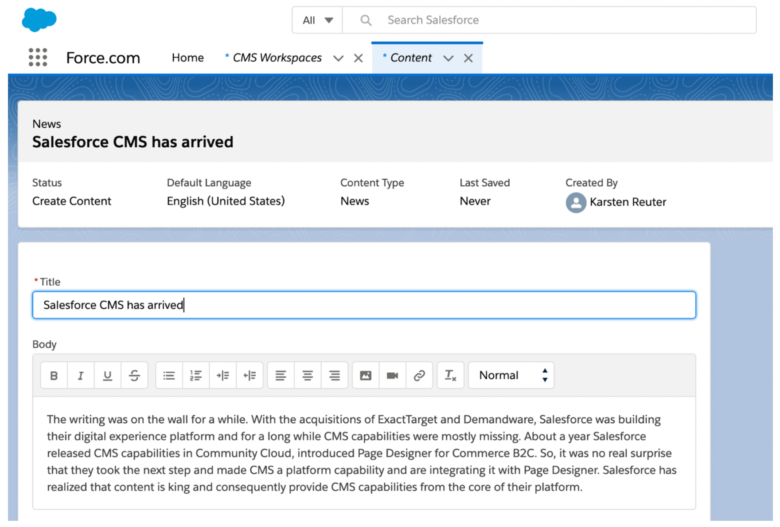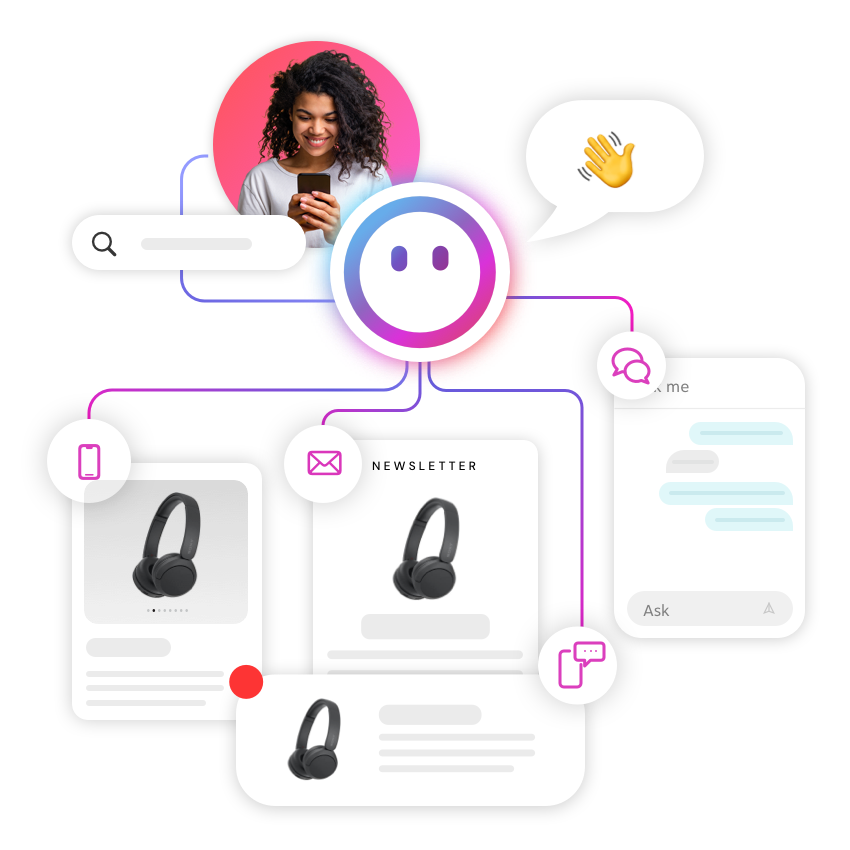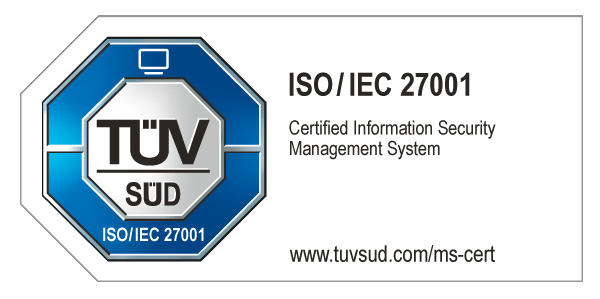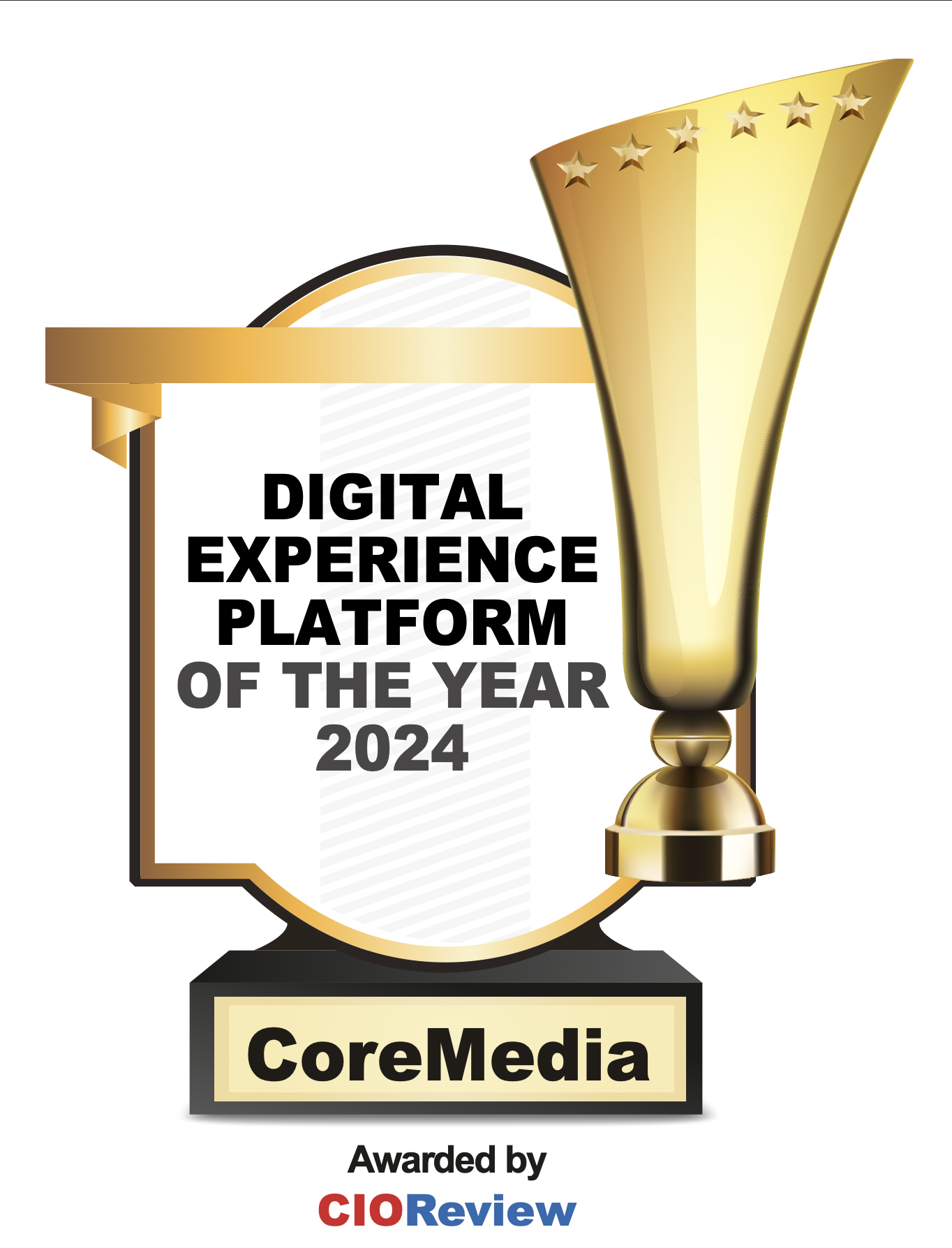The writing has been on the wall for some time now.
With their acquisitions of ExactTarget and Demandware, Salesforce has been steadily building digital experience platform (DXP) content management capabilities into their customer relationship management (CRM) system. But what’s been missing until recently has been real content management system (CMS) functionality.
But just like in the latest Star Wars trilogy, momentum has been building for Salesforce.
About a year ago, Salesforce unveiled some basic CMS capabilities in Community Cloud and then introduced Page Designer for Commerce B2C to manage content. So it’s no real surprise that they have now taken the next step in content management and made CMS a fundamental platform capability and are actively integrating it with Page Designer for customers.
Salesforce has realized what we’ve known for years: content is king and the right CMS capabilities can make or break a CRM platform.
Since Salesforce is a leader in the DXP space, it’s no surprise that this announcement has generated a lot of attention, including these reviews by analysts:
Looking at the content capabilities of the product and comparing them with the available reviews from analysts and marketing professionals, I share the same viewpoint.
Salesforce is taking a bold marketing position that makes sense in the DXP and content management space – even more so if you are buying into the Salesforce ecosystem with its extensive library of third-party apps. And their positioning as a hybrid CMS is also in line with market trends and what customers demand from marketing and CRM platforms.
On the other hand, most of that positioning is relying on a roadmap where the current product is focusing on simple content use cases. With my 20 years of experience in the CMS space, I can confidently say that as businesses expand their online content offerings, the use cases get substantially more complicated (and users can get more frustrated without the right tools).
We have seen this with other vendors – especially in the commerce space – where the CMS solutions provided by their platforms managed to address simple content use cases but struggled mightily to provide the feature richness, maturity, personalization options, and user experience that mature CMS’s can provide.
In the end, I share the view of Gartner Senior Research Director Irina Guseva: market confusion still exists and the next few years will reveal whether Salesforce CMS can grow beyond its current minimal use cases. Because for the highest impact business use cases a second and more mature CMS is definitely needed.
Don't get me wrong: I love seeing the innovation going on at Salesforce, which continues to be an important partner for us. But I'm also confident that our enterprise-grade CMS, CoreMedia Content Cloud, is the right choice for innovative companies looking for quicker online updates, more flexibility for their developers, headless options, deeper integrations, and better branding opportunities for their content marketing efforts.
It's a fascinating time to be in this business. May the Force be with you.









